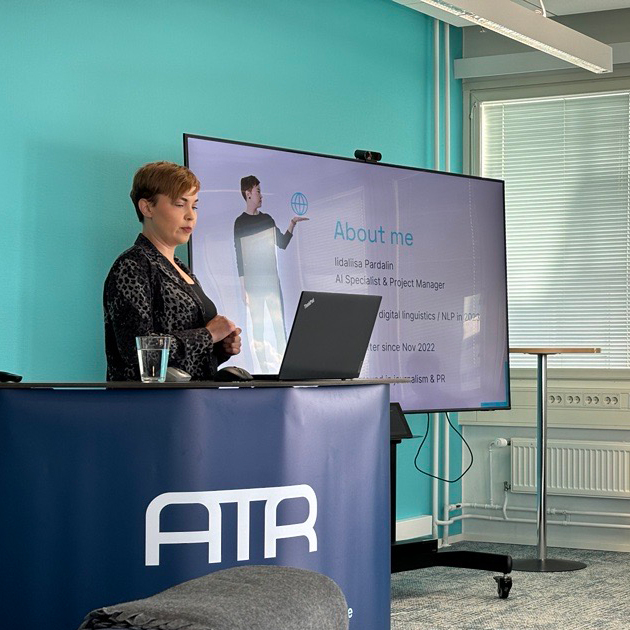Artificial intelligence is transforming business, enhancing efficiency – in fact, it’s creating a totally new model in which businesses are run. Could you imagine a world without Google search assisting you in information gathering? The same is already true for the various AI assistants we are using daily, either by choice or by subtle assistance built into all office tools used today.
To the spirit of transparency, even this blog post has been assisted by:
• Deepseek for information gathering
• ChatGPT for cross-checking the consistency of information gathered from other AI sources
• AI driven Predictive text feature for smooth typing in Ms Word
All this with human oversight by yours truly. And of course, the overall vision of what I want to convey to you is mine. There’s absolutely no shame in taking AI into full use – transparently!
Since AI has become an everyday tool for us, it’s important to ensure AI use is well governed. In fact, establishing an AI policy in alignment with the EU AI Act may just be the key to the successful use of AI.
Here are five ways EU AI act driven approach can help your business thrive:
1. Clear communication: Explain how AI is used
Customers and business partners are rightfully cautious about AI, especially when it plays a role in decision-making processes that affect them directly. After all, accountability remains with you, regardless of who gave you the advice. There’s in fact no difference compared to acting on information gathered from Google search – you are still responsible for the outcome.
- EU AI Act requires that High risk AI systems must provide meaningful information about the purpose logic and limitations of the AI model. Companies like ATR, known for their high ethical standards, often extend this transparency to all AI use, not just high-risk systems. (Article 13)
- Steps to build trust
- Publish an AI use policy both internally and externally explaining how AI is applied to your business practice
- Use simple jargon-free language, explaining in practice how the AI is participating in the process
Result: Customers feel informed rather than mislead, which strengthens confidence in your brand.
2. Proactive disclosure, when AI interacts with users
No one likes the feeling of being tricked. We’ve all had the frustration of talking to a chatbot when expecting a real human interaction.
- EU AI act requires users to be informed that they are interacting with an AI, consider e.g. chatbots, deepfakes & other AI generated content. (Article 50)
- Steps to build trust
- Add clear disclaimers such as “Just So You Know – You’re Chatting with a Chatbot!”
- Allow easy escalation to human interaction
Result: Customers appreciate the transparency, reducing frustration and increasing overall satisfaction.
3. Accountability, show how AI decisions are monitored
EU AI Act was shaped by growing concerns over AI bias and errors in process automation using non-deterministic AI systems. Transparency regarding the safeguards reassures your customers and business partners.
- EU AI Act requires that high risk AI systems must have proper human oversight. (Article 14)
- Steps to build trust
- Publish an oversight program detailing how fairness has been achieved by bias testing and third-party reviews. Consider if some level of human oversight should be extended to lower risk applications.
- Consider implementing an appeals process for AI driven decisions
Result: Customers see your commitment humane approach – demonstrating fairness builds trust in your brand and create loyalty.
4. Data privacy, disclose the AI training dataset and data use
Data is as valuable to you as it is for your users, business partners and content creators – be fair and transparent on how you plan to utilize data at your disposal. Be sure to comply with personal data protection rules (e.g. GDRP).
- EU AI Act requires that providers of AI models must disclose their AI training datasets. (Article 10)
- Steps to build trust
- Clarify and ask consent for using customer / user data to AI training
- Offer opt-outs where necessary
Result: Customers feel respected rather than exploited, boosting their trust and willingness to engage with AI-powered services.
5. Continuous improvement: monitor fix and tune
The rapid pace of AI development has led to that systems must be updated more frequently than ever. Be transparent on the improvements that the updates bring – or the deficiencies you have fixed.
- EU AI Act requires that high risk AI systems must have ongoing performance monitoring. (Articles 15 and 17)
- Companies that want to succeed in AI space should consider this as best practice, regardless of formal risk level.
- Steps to build trust
- Publish regular reports on AI impact to your business and your customers
- Be open about issues you have fixed – explain how you have ensured the quality for future releases
Result: Customers recognize your commitment to ethical and transparent AI use, strengthening long-term trust in your brand.
Conclusion: Transparency leads to trust and business success
EU AI Act is more than just a regulatory requirement – it provides you a clear pathway to success in the new AI driven business landscape. By embracing transparency and compliance, you will:
- Win customer loyalty by reducing AI skepticism
- Mitigate reputational risk through transparency – no hidden AI flaws
- Stay ahead of the curve by empowering your business to take full advantage of AI
Contact ATR team today – let’s start smooth and successful AI journey together!
Published: 6.6.2025





